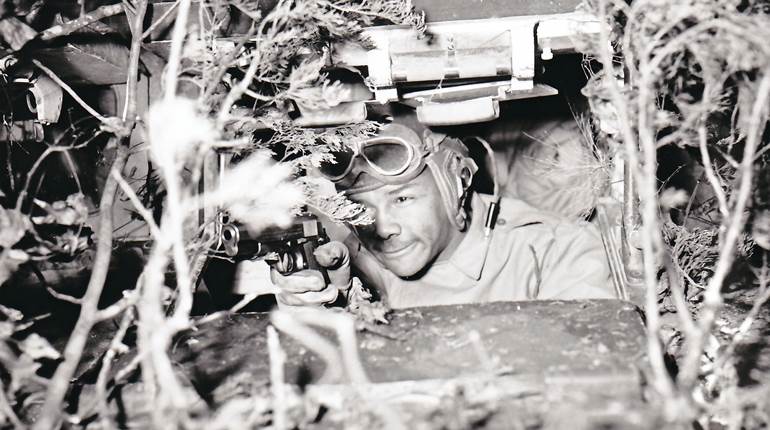
"Whatever happens, we have got The Maxim gun, and they have not.“ — Hilaire Belloc, The Modern Traveller (1898)
John Hutchins’ book, Death Rattle, is the definitive treatise on the machine gun as used by British forces from 1870-2015. Gatlings, Gardners, STEN’s and Brens (as well as dozens of others) are covered in great detail and supported by shockingly clear and detailed photos of the guns and their accouterments. Close up detailed photos show how each gun functioned, and a substantive number of period photos show soldiers using the guns during their long and storied history.
This is not your typical “gun book” as you may be used to perusing. The introduction, “30,000 Operations,” gives the reader a look at many of the contemporary thoughts and reviews on the whole idea of the machine gun entering into the service of the British military. Essays on the technological advances and reactions as to the morality of the use of such a “weapon of mass destruction” provide an interesting commentary on the subject matter at hand. The closing chapter, “The Future,” also deals with the question of the 20th century arms race. Given chemical and nuclear choices, does the machine gun represent the furthest man is willing to take his technological advances in warfare? Interesting thoughts to ponder while also learning how Maxim’s 1881 design evolved into the Vickers—eventually the bane of trench-dwelling infantry during the Great War (1914-1918).
While most books of this nature have dwelled mostly on American Browning designs and Maxims, this is the first book to clearly delineate the evolution of British automatic firearms from their infancy to current use. From crew-served Gatlings to the Minimi, every model and type are thoroughly documented in the 512-page tome. Well indexed, this is a “must have” for any shooter or collector of these workhorses of the Empire. tommyatkinsmedia.co.uk




































